- Home
- slideshows
- miscellaneous
- The most fascinating details and secrets from inside Singapore Airline's food facility
The most fascinating details and secrets from inside Singapore Airline's food facility
Gate Gourmet staffs 30 people a day to work one Singapore Airlines flight. The kitchen has just five hours to cook 1,500 meals for a full flight, and offerings include Western, Asian, and special meals, each with their own team of chefs and recipe books.

To ensure cultural authenticity, recipes include precise measurements for spices and ingredients. One mistake or deviation from the recipe could result in 33 pounds of food wasted at a time.
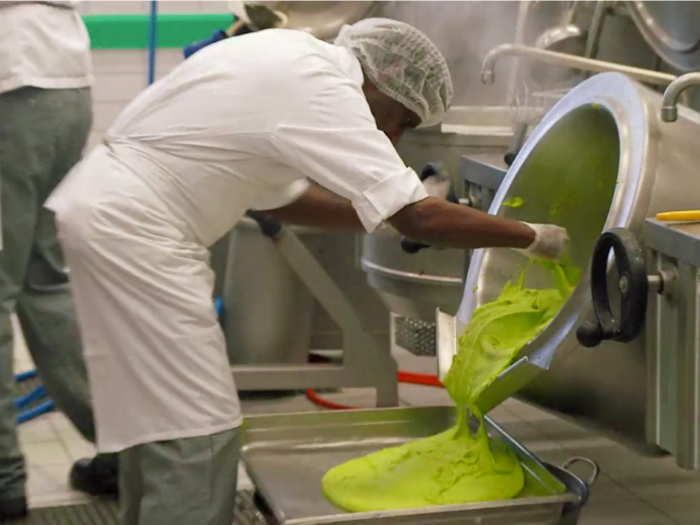
Source: "Mega Food"
The most complex foods for the kitchen to make, Fisher said, are ethnic foods where there is also a religious component restricting certain ingredients. "You need a lot of understanding of culture," he said.
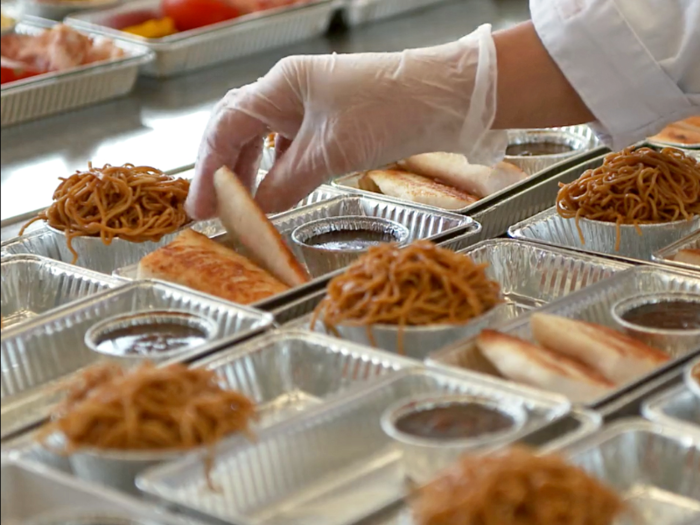
Source: "Mega Food"
In one week on average, the kitchen goes through almost 1,300 pounds of beef tenderloin, more than 200 gallons of cream, and 96,150 bread rolls. Virtually every menu item, with the exception of pralines, are handmade in the premises.
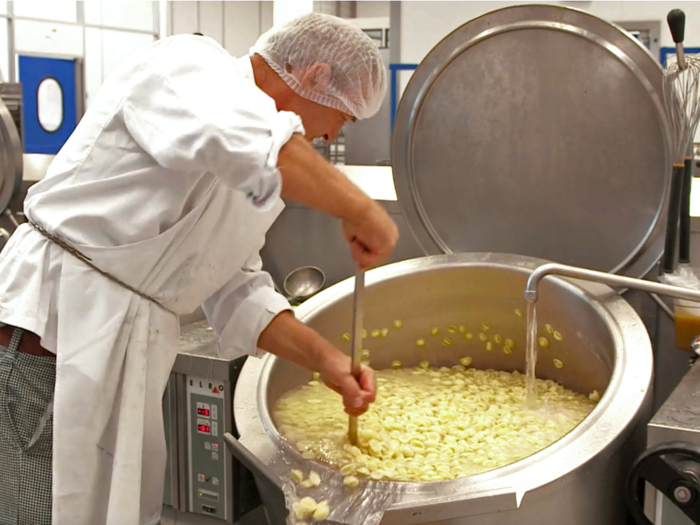
Source: "Mega Food"
Singapore Airlines will switch their menus around every month or two depending on the sector. It takes one to three months for chefs to develop new menu items.
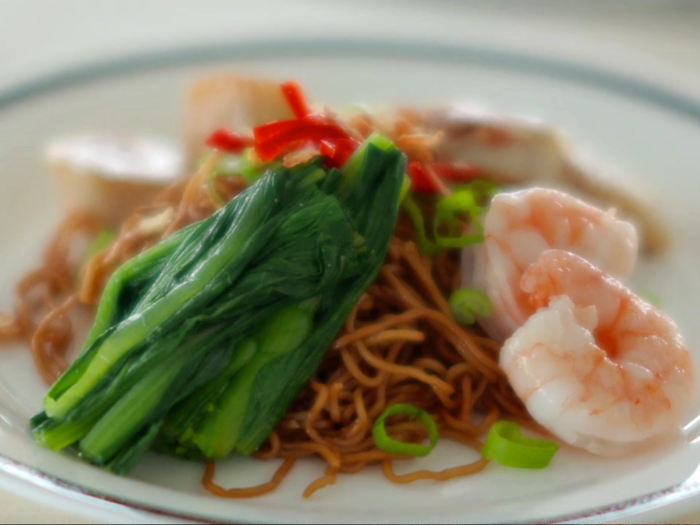
Source: "Mega Food"
The development kitchen uses an airline convection oven to simulate the the conditions on a plane. The one thing it can't simulate — the low pressure on the plane. Pressure lowers our ability to taste salty and sweet foods. What's more, reheating food also lowers the salt. The kitchen compensates for this by putting a lot of punch in their food.
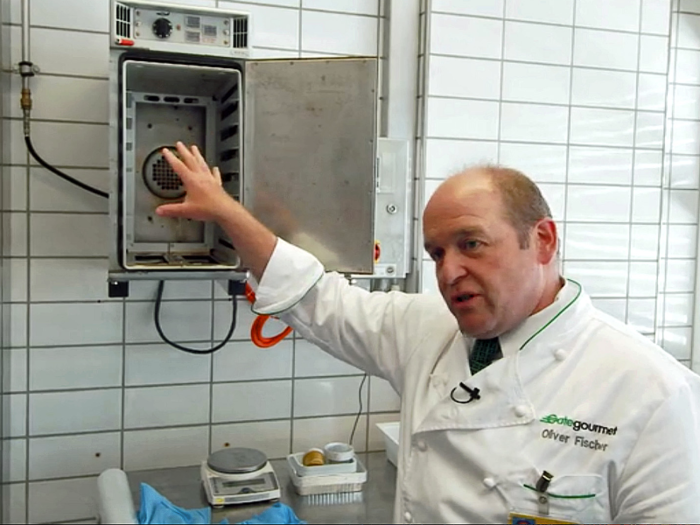
Source: "Mega Food"
The food must be reheatable but also hygienic, food and beverage manager Hermann Freidanck said. That means the food isn't fully cooked so that when it's reheated it doesn't dry out, but it cannot be raw. There's a fine balance, Freidanck said. Certain foods are not good for reheating, he added, like very fine fish, so the airline opts for the better option, in this case, more fatty fish.
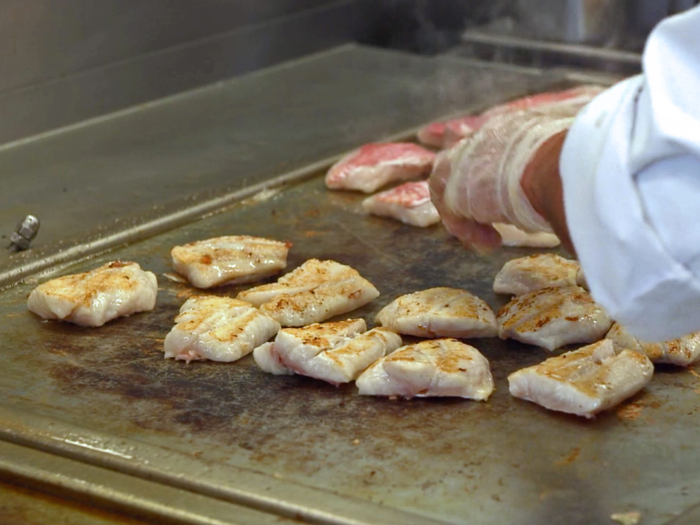
Source: "Mega Food"
Ingredients also have to smell good. Fondue and raclette may taste delicious, but because of their smell, they're a no-no on planes. Cabbage can also be an odor offender, so it has to be blanched, and the airline opts for lighter cabbage.
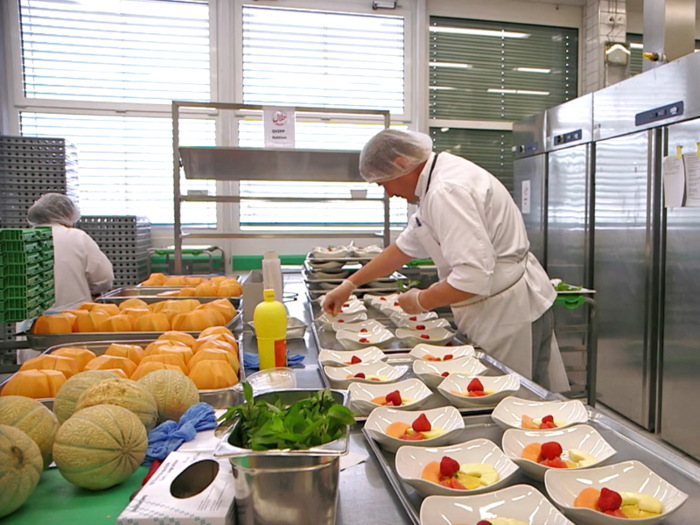
Source: "Mega Food"
Once food is prepared, the kitchen has four hours to chill the food to the point that it has reached under 50 degrees Fahrenheit. As a matter of food safety, the food needs to be chilled rapidly because bacteria grow most rapidly between 80 and 140 degrees Fahrenheit. If it takes longer than four hours to chill the food down, Gate Gourmet throws the meals away and starts over again.
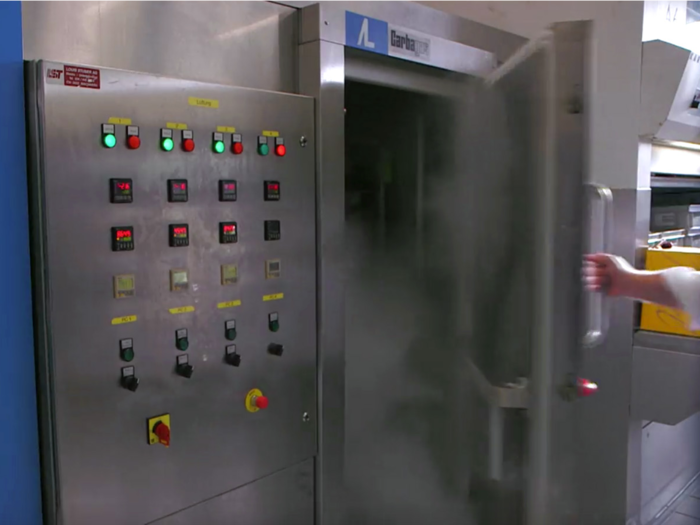
Source: "Mega Food"
The airline goes through 70,000 pieces of real cutlery a day. To clean all these knives, forks, and spoons, Gate Gourmet uses a special cutlery cleaning machine, which uses a combination of minerals and water instead of soap to get them all sparkly clean. People sort dirty trays for clean up or clean out in an assembly line, separating cups, plates, and cutlery. Another assembly line packages the clean cutlery for the next flight.

Source: "Mega Food"
A separate team known as the portion team is dedicated to masking sure meal sizes are exactly the same for each passenger. They have only 45 minutes to portion 1,500 meals, and the food must be kept below 60 degrees Fahrenheit the entire time.
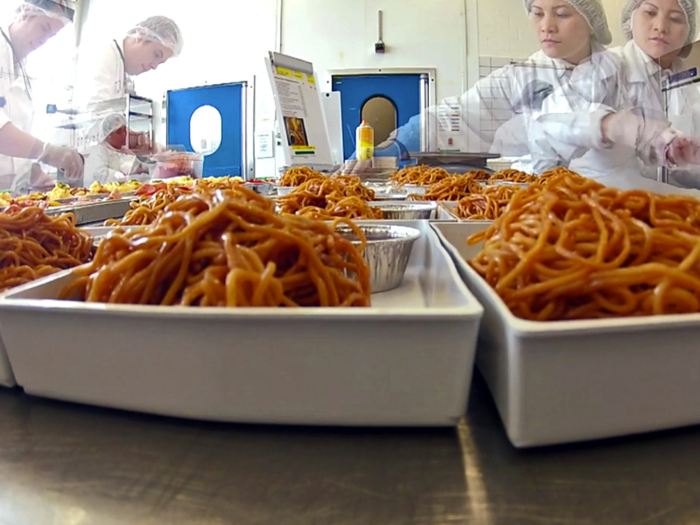
Source: "Mega Food"
Airlines portion their food meticulously for a number of reasons. First, there's the matter of not stoking the jealousy of neighboring passengers. Airlines also have strict weight requirements, so every ounce counts. Additionally, when you're serving 1,500 meals a flight, extra spoonfuls add up budget-wise.
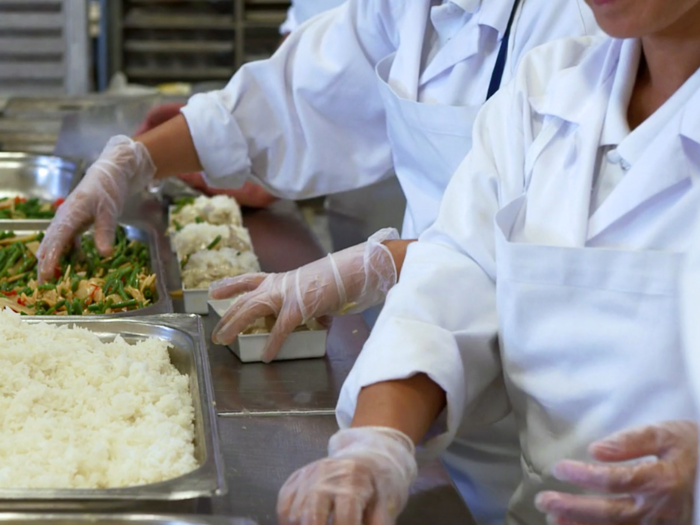
Source: "Mega Food"
Every class has different meal packaging. In economy class, meals are packaged in foil, heated, and served that way. In business and first class, meals are packaged with separations between sauces and other components, and flight attendants heat the containers this way. They then transfer the meal to a plate before serving, carefully following a plating guide.

Source: "Mega Food"
For safety purposes, Singapore Airlines' cabin crew have their own meal options separate from passengers' options. Pilots and copilots must also be provided with different meals from passengers, as well as different meals from one another. No shellfish is allowed in the cockpit either.
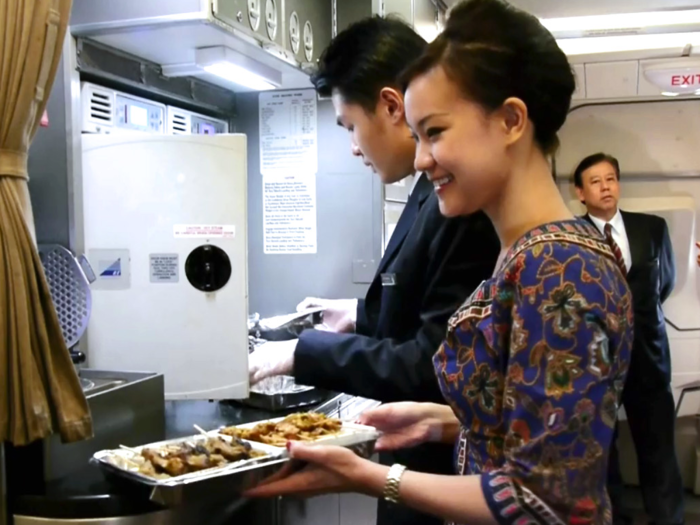
Source: "Mega Food"
Popular Right Now
Popular Keywords
Advertisement